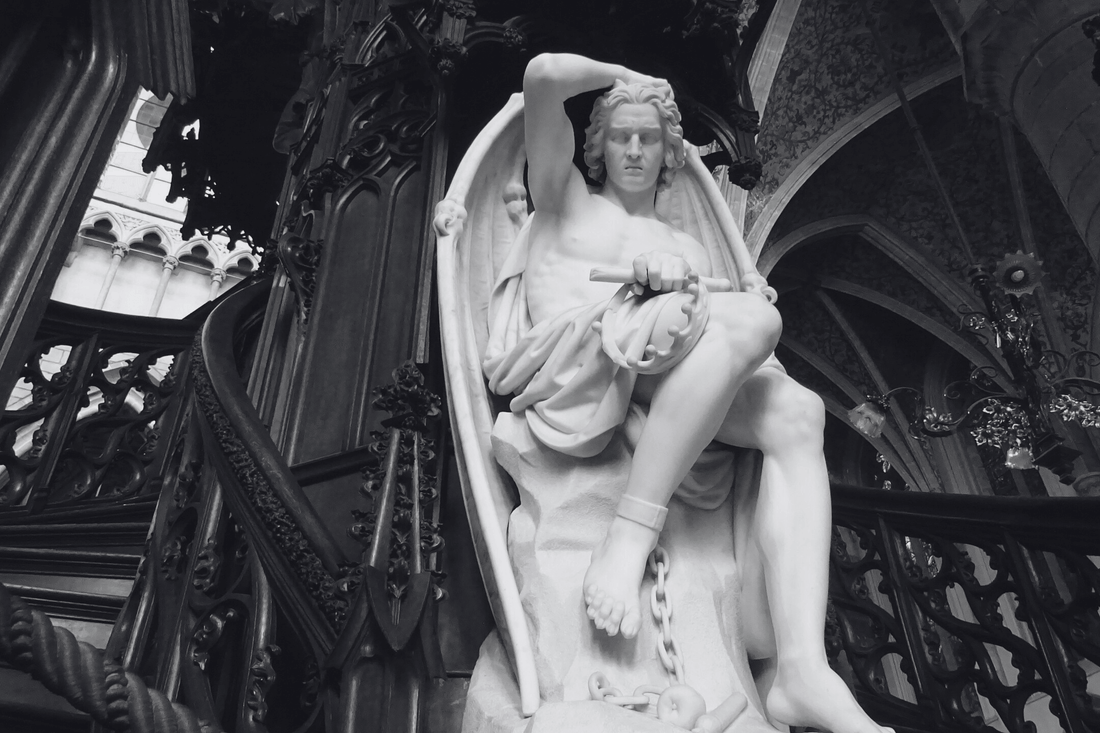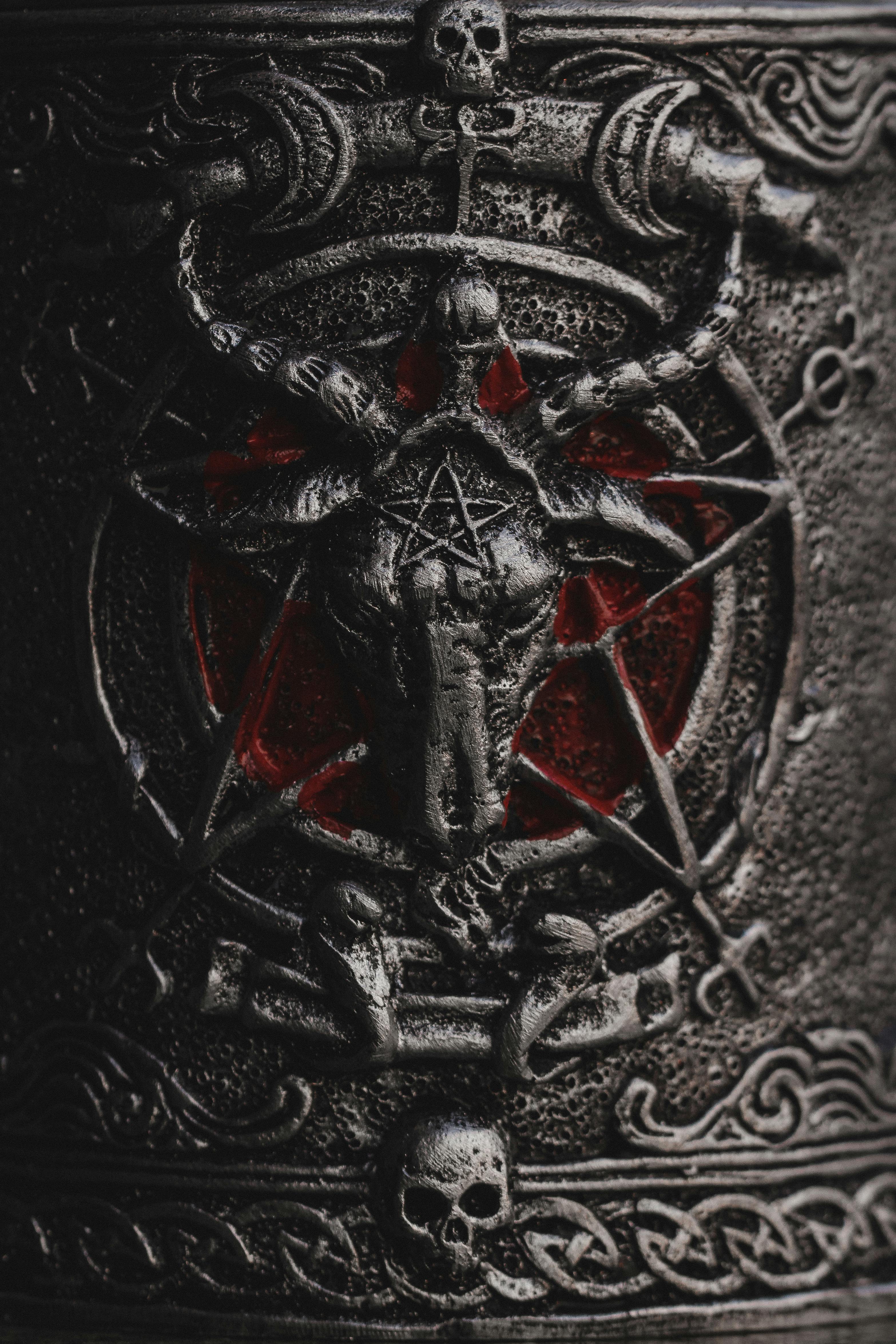
Is Satan the Same as Lucifer?
Share
The question of whether Satan and Lucifer are the same entity sparks endless debate. These figures often get lumped together in religious discussions, literature, and pop culture, but their origins tell a more complicated story.
"Lucifer" appears in only a handful of places in religious texts, most notably in Isaiah 14:12, where it refers to the "morning star" or a fallen king of Babylon. Over time, interpretations twisted this poetic metaphor into the name of a specific being, often linked to rebellion and pride. On the other hand, Satan, whose name translates to "adversary" in Hebrew, is a figure with a much broader role in scripture. He starts as a tester of faith and evolves into the symbol of ultimate evil in Christian theology.
The confusion between these two stems from centuries of translation quirks, theological debate, and creative storytelling. For instance, John Milton’s Paradise Lost (1667) played a huge role in blending the identities of Satan and Lucifer, portraying the latter as a proud angel who falls from grace. Since then, the two names have been used almost interchangeably, but does that make them the same?
This article dives into the historical, religious, and cultural roots of these figures, aiming to clarify their identities. Are Satan and Lucifer truly one and the same, or has history turned them into a single mythic figure? Let’s unpack the evidence.
Lucifer as the Morning Star
The name "Lucifer" comes from the Latin word *lucifer*, meaning "light-bringer" or "morning star." It appears in the Latin Vulgate translation of the Bible, specifically in Isaiah 14:12. The verse reads: *“How you are fallen from heaven, O Lucifer, son of the morning!”* (King James Version). However, the original Hebrew text doesn’t mention "Lucifer" as a proper noun. Instead, it uses the term *helel ben shachar*, often translated as "shining one, son of the dawn."
The context of Isaiah 14 is critical. The passage is a prophecy against the king of Babylon, condemning his arrogance and downfall. Early interpreters saw it as a metaphor for earthly pride rather than a story about a specific supernatural being. Over time, though, the imagery of a "fall from heaven" became associated with the concept of a rebellious angel cast out of God’s presence.
In later Christian writings, particularly during the Middle Ages, "Lucifer" evolved from a metaphor to a name tied to the devil. This shift was influenced by the Latin Vulgate and commentaries that linked Isaiah 14 with passages from the New Testament, such as Luke 10:18 ("I saw Satan fall like lightning from heaven"). The interpretation gained further traction when the Protestant Reformation popularised the King James Bible.
Interestingly, in early Christian tradition, "Lucifer" wasn’t always viewed negatively. The name was even used for bishops and saints, as it carried connotations of enlightenment. Only later did the association with Satan take over, blending the identities in both religious and cultural narratives.
In summary, the term "Lucifer" began as a poetic description of a human king’s arrogance. Its transformation into a name for the devil is a product of translation, interpretation, and theological evolution. This historical shift laid the groundwork for the modern-day conflation of Lucifer and Satan.

Photo by James Superschoolnews
The Evolution of Satan
Satan’s story begins in the Hebrew Bible, where he is not an embodiment of evil but a figure fulfilling a specific role. The word "Satan" comes from the Hebrew ha-satan, meaning "the adversary" or "accuser." In early texts, such as the Book of Job, Satan acts more like a prosecutor in God’s court than a rebel against divine authority. He tests Job’s faith and loyalty, but only with God’s permission.
This portrayal shifts dramatically in later Jewish and Christian traditions. By the time of the New Testament, Satan transforms into a cosmic antagonist. In texts like Matthew 4, Satan tempts Jesus in the wilderness, presenting himself as the enemy of righteousness. Here, Satan is no longer an obedient servant of God’s will but a rival to God’s authority.
Christianity solidified Satan’s role as the ultimate evil figure. This shift was influenced by apocalyptic literature, such as the Book of Enoch, which introduced the idea of rebellious angels who fell from grace. Over time, Satan merged with these fallen beings, leading to the image of the devil as a former angel cast out of heaven.
In medieval theology, Satan’s character became more developed. Theologians like Thomas Aquinas described him as the leader of a rebellion against God, a role closely tied to the story of Lucifer. By the Middle Ages, Satan and Lucifer were often seen as one and the same, with Satan’s rebellion and Lucifer’s fall becoming part of the same narrative.
Modern interpretations further expand on this evolution. In some traditions, Satan represents more than a literal being - he embodies sin, temptation, and human moral struggle. This symbolic role is particularly prominent in modern philosophy and literature.
To summarise, Satan’s evolution from an adversary to a tempter and ruler of hell reflects the changing needs of religious storytelling. Early texts presented him as an accuser serving divine justice. Later, he became a more independent and sinister figure, embodying humanity’s fears and struggles with evil. This transformation set the stage for his merging with Lucifer in theology and culture.
Key Differences Between Lucifer and Satan
The idea that Satan and Lucifer are the same entity isn’t as straightforward as it might seem. Their roles, origins, and representations in religious texts offer several distinctions that complicate the argument for their equivalence.
Origins and Context
Lucifer’s origin lies in Isaiah 14:12, where he is metaphorically described as a fallen "morning star" representing the pride and downfall of the Babylonian king. This imagery was later interpreted by early Christians as a reference to the fall of a heavenly being. However, this connection is more symbolic than direct.
Satan’s origin, on the other hand, is rooted in his role as an accuser or adversary in the Hebrew Bible. Unlike Lucifer, whose "fall" is tied to pride and rebellion, Satan’s initial role is that of a servant carrying out God’s will, as seen in the Book of Job. His evolution into a tempter and symbol of evil happened later, largely in Christian theology.
Different Roles
Lucifer is traditionally linked with themes of light, pride, and rebellion. The term morning star (a name also used for Venus) highlights his association with brilliance and beauty before his fall. His story centres on defiance and ambition, leading to punishment.
Satan, however, serves a more dynamic role. In some texts, he tests faith; in others, he is a tempter, an accuser, or even the ruler of hell. His story encompasses a broader narrative, positioning him as the embodiment of evil and sin.
Theological Interpretations
Theological debates further muddy the waters. Some Christian traditions argue that Satan and Lucifer are one and the same, with Lucifer’s fall symbolising Satan’s rebellion against God. This interpretation gained traction through works like Paradise Lost, which blended the two into a single character: a proud angel who defied God and was cast into hell.
However, other interpretations keep them separate. Lucifer’s story, rooted in Isaiah, is seen as metaphorical or tied to a specific time and place, while Satan’s evolution as a cosmic evil spans multiple texts and traditions. Scholars often argue that merging them simplifies complex theological ideas into a single narrative, which may not reflect their original meanings.
Cultural Depictions
Modern culture often treats Satan and Lucifer as interchangeable. Movies, books, and television shows frequently portray them as the same being, a fallen angel turned ruler of hell. This approach reinforces the idea of their equivalence but is largely a product of artistic convenience rather than theological accuracy.
Conclusion
While they are often conflated, Satan and Lucifer have distinct origins and roles that suggest they are not inherently the same. Lucifer’s story is one of individual pride and punishment, while Satan represents a broader concept of evil and opposition to divine will. The blending of their identities is more a product of historical interpretation and cultural storytelling than scriptural clarity.

Photo by Kevin Grieve on Unsplash
Pop Culture’s Influence on the Narrative
The merging of Satan and Lucifer into a single character owes much to popular culture. Over centuries, literature, art, and entertainment have blurred the distinctions between these two figures, creating a dominant narrative that often oversimplifies their origins.
Literature’s Role in the Blend
As mentioned earlier, John Milton’s Paradise Lost solidified the image of Lucifer as the devil, driven by pride and ambition. Milton’s Lucifer famously declares, “Better to reign in Hell than serve in Heaven,” a line that has defined the devil’s character in Western literature ever since.
Dante Alighieri’s Inferno (14th century) also contributed to this image. While Dante doesn’t explicitly call his devil "Lucifer," he depicts Satan as a fallen angel imprisoned in the frozen depths of hell. By portraying Satan as a literal fallen being, Dante helped reinforce the idea of a singular, unified devil figure.
Film and Television
Modern media has taken this blending even further. Shows like Lucifer (2016–2021) humanise the character, portraying him as a witty, charming anti-hero. The series draws heavily on the idea of Lucifer as a fallen angel struggling with his identity, echoing themes from Milton’s work. While entertaining, this portrayal erases much of the theological nuance surrounding the figures.
Similarly, horror films often use "Lucifer" and "Satan" interchangeably to invoke fear and drama. Movies like The Exorcist (1973) or The Omen (1976) capitalise on the cultural understanding of Lucifer as another name for the devil, reinforcing the idea that they are the same.
Music and Art
Lucifer has also become a symbol in music and art, often representing rebellion or individuality. Bands like Black Sabbath and artists like David Bowie have referenced Lucifer to explore themes of defiance, self-expression, and societal norms. This use of the name further divorces it from its original biblical context, cementing its association with Satan as a cultural icon rather than a distinct figure.
Why the Confusion Persists
The main reason for the continued conflation of Satan and Lucifer is that it’s simpler. Pop culture thrives on archetypes, and combining these figures creates a single, powerful symbol of evil and rebellion. This simplicity appeals to audiences but often overlooks the complexities found in historical and theological sources.
The Impact of Pop Culture
While pop culture has kept the stories of Satan and Lucifer alive, it has also shaped public understanding in ways that may not reflect their origins. For most people today, the devil is a singular figure whose identity merges elements of both Lucifer’s prideful fall and Satan’s role as a cosmic adversary.
In the end, pop culture has played a significant role in merging Satan and Lucifer into the singular image of the devil we know today. While this makes for compelling stories, it often sacrifices the rich historical and theological context that differentiates them.

Photo by Lucas Pezeta
Cultural and Religious Variations
The identities of Satan and Lucifer differ significantly across cultures and religious traditions. These variations highlight how historical context and theological interpretations shape our understanding of these figures.
Judaism and Satan as an Adversary
In Jewish tradition, Satan is not a cosmic villain but an agent of God. The Hebrew Bible portrays him as a tester or accuser, operating within God’s framework. For instance, in the Book of Job, Satan challenges Job’s righteousness to test his faith. There is no mention of Lucifer or a fallen angel in Jewish scripture. The concept of a rebellious devil is foreign to traditional Jewish theology.
Christianity and the Fusion of Identities
Christianity presents the most developed narrative of Satan and Lucifer, often merging the two. The New Testament elevates Satan to a central antagonist, describing him as the "prince of this world" (John 12:31) and the tempter in Jesus’s trials (Matthew 4). Over time, interpretations of Isaiah 14:12, combined with other biblical passages like Revelation 12:9, led to the association of Lucifer with Satan.
This blending became more pronounced in medieval Christianity, which used the story of Lucifer’s fall to illustrate pride and rebellion. Theologians like Augustine and Aquinas linked Lucifer’s imagery to Satan’s actions, cementing the connection in Western theology.
Islam and Iblis as a Separate Entity
In Islamic tradition, Satan is identified as Iblis. He is a jinn, not an angel, who refuses to bow to Adam and is cast out of God’s favour. While his story shares similarities with Lucifer’s rebellion, Iblis’s identity remains distinct. The Quran does not use the term "Lucifer," and his defiance stems from arrogance and envy rather than an angelic fall. Iblis serves as a tempter and deceiver but is clearly separate from the concept of Satan in Christianity.
Zoroastrianism and the Influence of Ahriman
Some scholars argue that Zoroastrianism, an ancient Persian religion, influenced the development of Satan as a figure of cosmic evil. Ahriman, the Zoroastrian spirit of destruction, is an independent force opposing the god Ahura Mazda. This dualistic struggle between good and evil may have shaped later concepts of Satan as a rival to God, though it has no direct connection to Lucifer.
Eastern Traditions: No Lucifer or Satan
In Hinduism and Buddhism, there are no equivalent figures to Satan or Lucifer. Concepts of evil are often tied to ignorance or karma rather than a personified being. However, some figures like Mara in Buddhism, who tempts Buddha during his enlightenment, share thematic similarities with Satan as a tempter.
Modern Spirituality and Symbolism
In modern spirituality, Lucifer is often reinterpreted as a symbol of enlightenment and rebellion rather than a literal being. Some new religious movements and philosophical traditions see Lucifer as representing individualism, free will, or the pursuit of knowledge. This reinterpretation diverges sharply from traditional religious views and highlights how the figure has been adapted for different purposes over time.
Summary of Cultural Variations
Across cultures and religions, the roles and identities of Satan and Lucifer vary widely. In some traditions, they are distinct figures; in others, they are blended into a single entity. These differences reflect how societies adapt spiritual concepts to fit their beliefs, creating a complex and multifaceted narrative around these iconic figures.
A Case of Merging Myths
The debate over whether Satan and Lucifer are the same highlights the complexities of religious interpretation and storytelling. Both figures have unique origins, yet centuries of theological debate and cultural adaptation have intertwined their identities into a single archetype for many people today.
Lucifer began as a poetic metaphor in Isaiah, referring to the pride and downfall of a Babylonian king. Over time, this imagery evolved, influenced by Latin translations and Christian theology, into a story about a rebellious angel. Meanwhile, Satan originated as a divine accuser in Jewish texts and gradually transformed into the personification of evil in Christianity.
Their merging can be attributed to interpretations linking Lucifer’s fall to Satan’s rebellion, as well as influential works like Paradise Lost, which cemented the image of a singular devil. Pop culture further simplified their distinctions, creating a unified character that represents pride, temptation, and ultimate defiance of divine authority.
However, this blending overlooks the distinct roles these figures played in their original contexts. Lucifer’s story is tied to specific historical and metaphorical meanings, while Satan’s narrative spans different cultures and texts, reflecting humanity’s evolving understanding of good and evil.
In conclusion, the question of whether Satan and Lucifer are the same has no definitive answer. It depends on which lens you use - biblical, theological, historical, or cultural. While the two have become nearly synonymous in modern thought, their separate origins reveal a much richer and more nuanced story than what pop culture typically presents.













